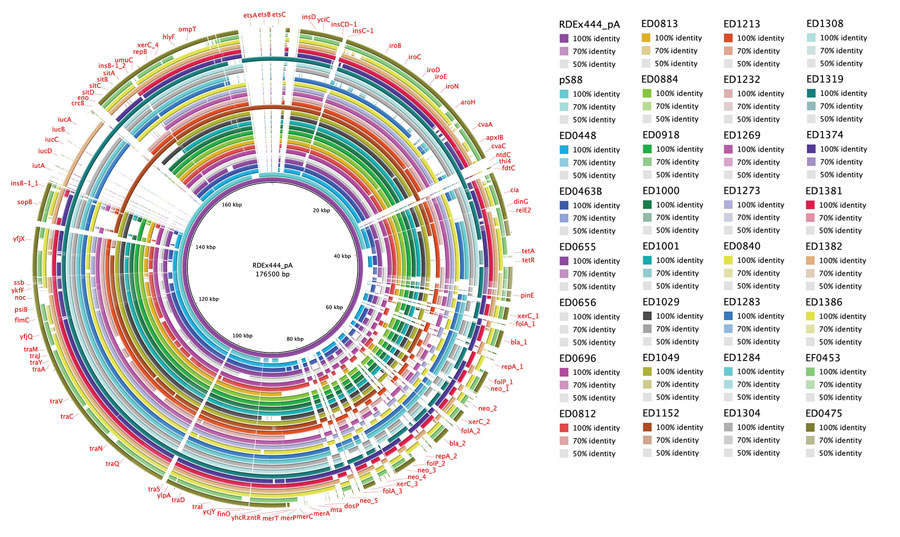Volume 27, Number 3—March 2021
Research
Genomic Characterization of hlyF-positive Shiga Toxin–Producing Escherichia coli, Italy and the Netherlands, 2000–2019
Figure 1

Figure 1. Whole-genome comparison of pR444_A–like plasmids in Shiga toxin–producing Escherichia coli strains harboring extraintestinal pathogenic E. coli (ExPEC)–associated virulence genes, Italy, 2000–2019. The pR444_A plasmid from RDEx444 strain was used as reference for alignment and gene annotation. Genomic annotation was performed by using the Prokka tool 1.14.5 (https://github.com/tseemann/prokka) and a multi-fasta file of trusted proteins related to ExPEC-associated genes on pR444_A. The comparative analysis also included the pS88 plasmid (GenBank accession no. CU928146.1) commonly found in ExPEC strains.
Page created: December 23, 2020
Page updated: February 21, 2021
Page reviewed: February 21, 2021
The conclusions, findings, and opinions expressed by authors contributing to this journal do not necessarily reflect the official position of the U.S. Department of Health and Human Services, the Public Health Service, the Centers for Disease Control and Prevention, or the authors' affiliated institutions. Use of trade names is for identification only and does not imply endorsement by any of the groups named above.